Unroasted |
|||
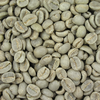 |
22 °C (72 °F), Green Beans Green coffee as it arrives at the dock. The beans can be stored for approximately 12–18 months in a climate controlled environment before quality loss is noticeable. |
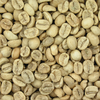 |
165 °C (329 °F), Drying Phase During the drying phase the beans are undergoing an endothermic process until their moisture content is evaporated, signifying first crack. |
Light Roast |
|||
 |
196 °C (385 °F), Cinnamon Roast A very light roast level which is immediately at first crack. Sweetness is underdeveloped, with prominent toasted grain, grassy flavors, and sharp acidity prominent. |
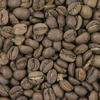 |
205 °C (401 °F), New England Roast Moderate light brown, but still mottled in appearance. A preferred roast for some specialty roasters, highlights origin characteristics as well as complex acidity. |
Medium Roast |
|||
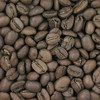 |
210 °C (410 °F), American Roast Medium light brown, developed during first crack. Acidity is slightly muted, but origin character is still preserved. |
 |
219 °C (426 °F), City Roast Medium brown, common for most specialty coffee. Good for tasting origin character, although roast character is noticeable. |
Dark Roast |
|||
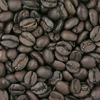 |
225 °C (437 °F), Full City Roast Medium-dark brown with dry to tiny droplets or faint patches of oil, roast character is prominent. At the beginning of second crack. |
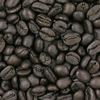 |
230 °C (446 °F), Vienna Roast Moderate dark brown with light surface oil, more bittersweet, caramel flavor, acidity muted. In the middle of second crack. Any origin characteristics have become eclipsed by roast at this level. |
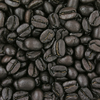 |
240 °C (464 °F), French Roast Dark brown, shiny with oil, burnt undertones, acidity diminished. At the end of second crack. Roast character is dominant, none of the inherent aroma or flavors of the coffee remain. |
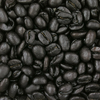 |
245 °C (473 °F), Italian Roast Nearly black and shiny, burnt tones become more distinct, acidity nearly eliminated, thin body. |
Flavors
At lighter roasts, the coffee will exhibit more of its "origin character"—the flavors created by its variety, processing, altitude, soil content, and weather conditions in the location where it was grown. As the beans darken to a deep brown, the origin flavors of the bean are eclipsed by the flavors created by the roasting process itself. At darker roasts, the "roast flavor" is so dominant that it can be difficult to distinguish the origin of the beans used in the roast.
Below, roast levels and their respective flavors are described. These are qualitative descriptions, and thus subjective.
|
Common roast names |
Notes |
Surface |
Flavor |
|
|
Light |
Cinnamon Roast, American Roast, New England Roast, Half City Roast, Moderate-Light Roast |
After several minutes the beans pop or crack and visibly expand in size. This stage is called first crack. |
Dry |
Lighter-bodied, higher acidity, no obvious roast flavor. This level of roast is ideal for tasting the full origin character of the coffee. |
|
Medium |
City roast, City+ Roast, Full City Roast |
After being developed through first crack, the coffee reaches these roast levels. |
Dry |
Sugars have been further caramelized, and acidity has been muted. This results in coffee with higher body, but some roast flavor imposed. |
|
Dark |
Full City+ Roast, Italian Roast, Vienna Roast, French Roast |
After a few more minutes the beans begin popping again, and oils rise to the surface. This is called second crack. |
Shiny. The level of oil correlates to how far the coffee is taken past second crack. |
Bittersweet flavors are prominent, aromas and flavors of roast become clearly evident. Little, if any, origin character remains. |
When describing the taste of coffee, the 3 tier coffee flavor tasters wheel is used based on 99 different attributes.
Caffeine content varies by roast level, diminishing with increased roasting level: light roast, 1.37%; medium roast, 1.31%; and dark roast, 1.31%. However, this does not remain constant in coffee brewed from different grinds and brewing methods. Because the density of coffee changes as it is roasted, different roast levels will contain respectively different caffeine levels when measured by volume or mass, though the bean will still have the same caffeine.
Home roasting
Home roasting is the process of roasting small batches of green coffee beans for personal consumption. Even after the turn of the 20th century, it was more common for at-home coffee drinkers to roast their coffee in their residence than it was to buy pre-roasted coffee. Later, home roasting faded in popularity with the rise of the commercial coffee roasting companies. In recent years home roasting of coffee has seen a revival. In some cases there is an economic advantage, but primarily it is a means to achieve finer control over the quality and characteristics of the finished product.
Packaging
Extending the shelf life of roasted coffee relies on maintaining an optimum environment to protect it from exposure to heat, oxygen, and light. Roasted coffee has an optimal typical shelf life of two weeks, and ground coffee about 15 minutes. Without some sort of preservation method, coffee becomes stale. The first large-scale preservation technique was vacuum packing in cans. However, because coffee emits CO2 after roasting, coffee to be vacuum-packed must be allowed to de-gas for several days before it is sealed. To allow more immediate packaging, pressurized canisters or foil-lined bags with pressure-relief valves can be used. Refrigeration and freezing retards the staling process. Roasted whole beans can be considered fresh for up to one month if kept cool. Once coffee is ground it is best used immediately.
Emissions and control
Particulate matter (PM), volatile organic compounds (VOC), organic acids, and combustion products are the principal emissions from coffee processing. Several operations are sources of PM emissions, including the cleaning and destoning equipment, roaster, cooler, and instant coffee drying equipment. The roaster is the main source of gaseous pollutants, including alcohols, aldehydes, organic acids, and nitrogen and sulfur compounds. Because roasters are typically natural gas-fired, carbon monoxide (CO) and carbon dioxide (CO2) emissions result from fuel combustion. Decaffeination and instant coffee extraction and drying operations may also be sources of small amounts of VOC. Emissions from the grinding and packaging operations typically are not vented to the atmosphere.
Particulate matter emissions from the roasting and cooling operations are typically ducted to cyclones before being emitted to the atmosphere. Gaseous emissions from roasting operations are typically ducted to a thermal oxidiser or thermal catalytic oxidiser following PM removal by a cyclone. Some facilities use the burners that heat the roaster as thermal oxidisers. However, separate thermal oxidisers are more efficient because the desired operating temperature is typically between 650–816 °C (1,202–1,501 °F), which is 93–260 °C (199–500 °F) more than the maximum temperature of most roasters. Some facilities use thermal catalytic oxidizers, which require lower operating temperatures to achieve control efficiencies that are equivalent to standard thermal oxidisers. Catalysts are also used to improve the control efficiency of systems in which the roaster exhaust is ducted to the burners that heat the roaster. Emissions from spray dryers are typically controlled by a cyclone followed by a wet scrubber.
